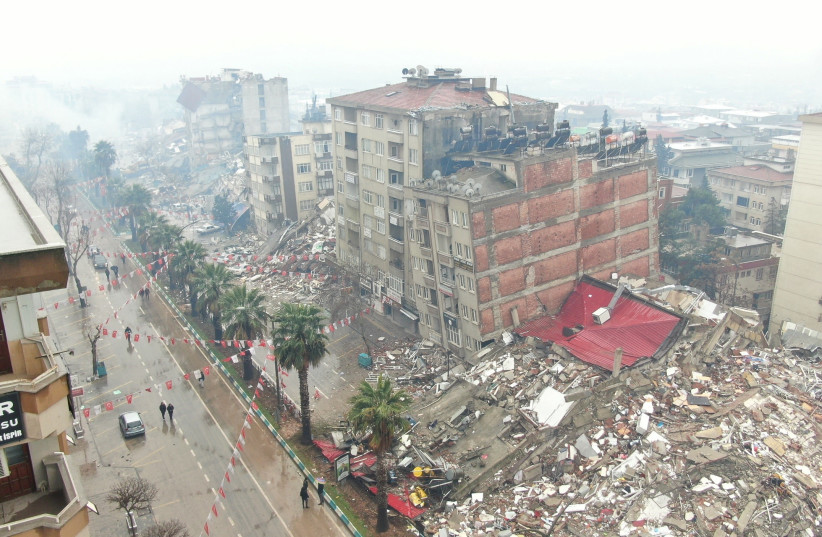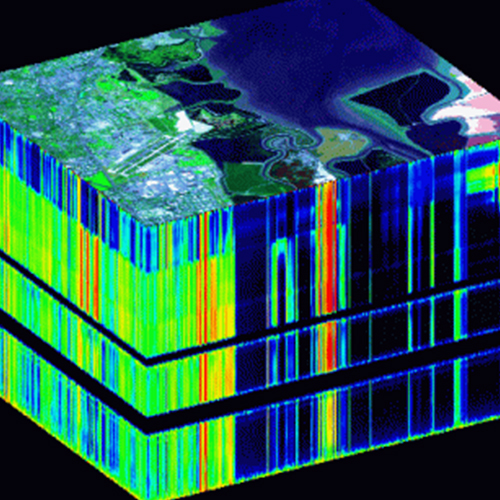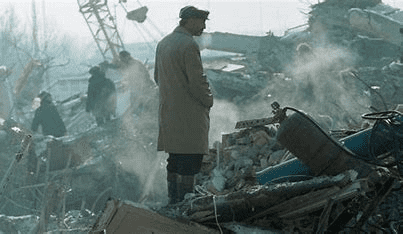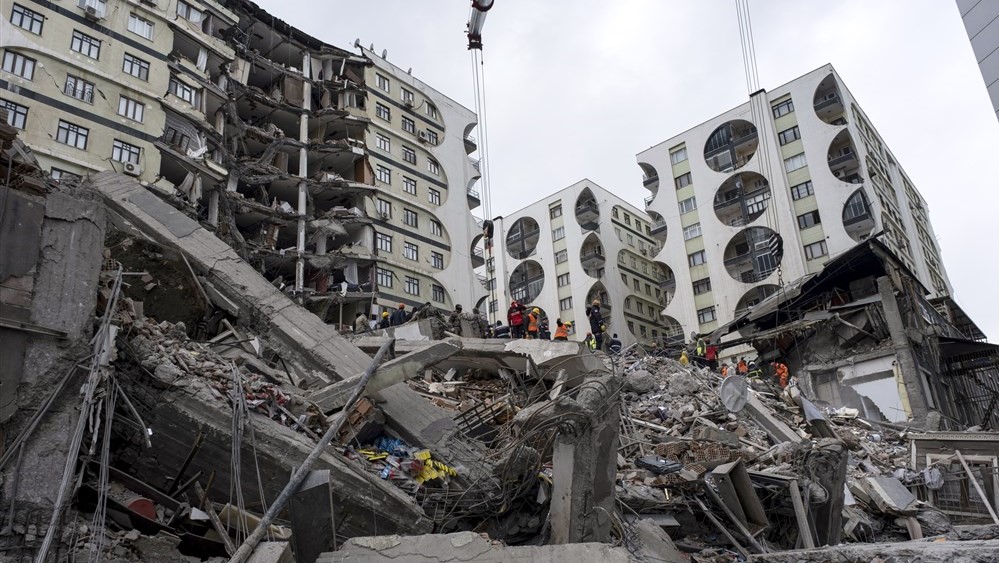You are using an out of date browser. It may not display this or other websites correctly.
You should upgrade or use an alternative browser.
You should upgrade or use an alternative browser.
Massive 7.8M Earthquake In Southern Turkey
- Thread starter mabar
- Start date
So we see NATO and not the Turkish army? How come?On the news: specialist rescue teams are already in Turkiye, or en route.
NATO OFFERED help . . . .
dmnlksm
Jedi
HOW MANY DEAD AND WOUNDED WERE THERE ON FEBRUARY 7?
Vice President Fuat Oktay announced the new number of dead and injured. Oktay reported that 3 thousand 432 people lost their lives and 20 thousand 534 people were injured in the earthquakes centered in Kahramanmaraş and that the number of personnel working in the region is 24 thousand 443. Underlining that the loss of life has been confirmed, Oktay announced that the number of people rescued from the rubble had exceeded 8 thousand and the number of collapsed buildings is 5 thousand 775.
Vice President Fuat Oktay announced the new number of dead and injured. Oktay reported that 3 thousand 432 people lost their lives and 20 thousand 534 people were injured in the earthquakes centered in Kahramanmaraş and that the number of personnel working in the region is 24 thousand 443. Underlining that the loss of life has been confirmed, Oktay announced that the number of people rescued from the rubble had exceeded 8 thousand and the number of collapsed buildings is 5 thousand 775.
Last edited:
The biggest thing you guys could look at would be the type of waves produced from the earthquakes before asking the C’s. You get both p and s waves. P waves being pressure waves and S waves being shear waves…. Anyway, if you take a look at the seismographs from nuclear tests underground, there’s only the p waves.
So you can go take a look at a few seismographs, in the case of this quake it has both types of waves, so it appears natural.
Who knows how a space based weapon would work, but you need crustal slippage to generate the shear waves, which are the most destructive types.
Here’s a quick understanding of how they travel if you guys want to shape questions for the C’s

Seismographs - Keeping Track of Earthquakes
Throw a rock into a pond or lake and watch the waves rippling out in all directions from the point of impact. Just as this impact sets waves in motion on a quiet pond, so an earthquake generates seismic waves that radiate out through the Earth.www.usgs.gov
A true nightmare. And nowhere we can see the army. Strange. Also strange how many buildings collapse. A true horror situation.
At 6:35 in the previous loreta's post video, we can see a seismic analysis that seems showing that the quake had both P waves and S waves. I don't know if they come from sismographs, but I thought it was worth mentioning it.
Myeong In
The Force is Strong With This One
maybe it's a combination of "natural" factors (planetary alignment, other influences) and it is only the beginning
The comet ZTF is not that far from us.
I remember that long time ago Jean-Pierre Petit made a study about sismic weapon. It was not by satellite, just some machine on a truck or some submarine. And of course, since this study, the technology could have been well improved.
FWIW, in French
With machine translator
FWIW, in French
With machine translator
I thought this was interesting given the current discussion

 ria.ru
ria.ru
Remote sensing of the Earth in what way exactly?

В России создадут спутниковую систему всепогодного зондирования Земли
Спутниковая система всепогодного дистанционного зондирования Земли создается в интересах Минобороны РФ, она будет способствовать повышению эффективности войск,... РИА Новости, 07.02.2023
MOSCOW, February 7 - RIA Novosti. The satellite system for all-weather remote sensing of the Earth is being created in the interests of the Russian Defense Ministry, it will help increase the effectiveness of the troops, said the head of the military department, Sergei Shoigu.
"We will consider the issue of re-equipping the orbital constellation of military spacecraft. As part of solving this problem, the development and creation of a satellite system for all-weather remote sensing of the Earth is being carried out," Shoigu said at a conference call on Tuesday.
Remote sensing of the Earth in what way exactly?
I wouldn't put much into that the army is not to be seen in an 8 minute video pieced together from all over the place.A true nightmare. And nowhere we can see the army. Strange.
On the other hand, I find it more nefarious that some people on the internet are talking about it as if it is true. That would fit into US psyop regime strategies of creating discontent within the population with the sitting government for not doing anything, which as far as we know isn't necessarily true at all. The US however knows that a PR campaign making Erdogan out to be incompetent in the face of a national disaster could pave the way for another president in the upcoming elections in Turkiye, who could be more subservient to the US.
Olivierlejardinier
Jedi Council Member
Found here, a bit of science, published 7 feb 2023 :
"
"
Hidden molten rock layer shatters knowledge of tectonic plates - study
The discovery of this hidden molten rock layer shows that molten rocks have nothing to do with tectonic plate movements, which cause earthquakes.
Scientists have managed to uncover a previously undiscovered layer of partially molten rock beneath the Earth's crust, but it seemingly has nothing to do with the tectonic plate movements that cause earthquakes, according to a new study.
The findings of the study were published earlier this week in the peer-reviewed academic journal Nature Geoscience, and the revelations in it shed light on the current scientific understanding of just how tectonic plates move, which is what essentially causes earthquakes.
What are tectonic plates and how do they cause earthquakes?
Tectonic plates are what essentially form Earth's lithosphere, which is the hard and rocky shell of the Earth.
These plates all shift as the planet does, constantly moving them in different directions like an ever-changing puzzle.
 A general view shows damaged and collapsed buildings after an earthquake in Kahramanmaras, Turkey February 6, 2023 (credit: Ihlas News Agency (IHA) via REUTERS)
A general view shows damaged and collapsed buildings after an earthquake in Kahramanmaras, Turkey February 6, 2023 (credit: Ihlas News Agency (IHA) via REUTERS)
When these plates move, it can cause the lithosphere to release energy, creating seismic waves. This results in a spark of seismic activity, ranging from nothing perceivable to a mild rumble to an apocalyptic level of destruction that causes a wave of horrific catastrophe over a wide geographical area.
That's what an earthquake is.
But while we know that tectonic plates move, we aren't exactly sure how.
What is known is that it involves the asthenosphere. This is another region of the Earth's outer layers, located below the lithosphere in the upper mantle. In other words, the asthenosphere is located right under the Earth's tectonic plates.
Since the asthenosphere is very soft, tectonic plates are able to move through it. That much is understood. What isn't understood is why the asthenosphere is soft in the first place. In fact, how the asthenosphere formed at all isn't fully understood either.
There have been theories behind the layer's softness, the most prominent of which being that molten rocks may have been behind it. But that isn't actually true. In fact, this recent study confirmed as much, finding that molten rock content didn't have any discernable association with the flow of the mantle.
So what is behind the shifting plates?
According to the researchers behind the study, the answer seems to be not the molten-ness of molten rock but instead convection, meaning the process of how heat can move or transfer. But how can this be proven?
More information was needed, and the scientists decided to investigate, hypothesizing that perhaps there was a hidden pocket of molten rock in the asthenosphere that could prove this theory.
Noticing signs of partially molten rock while investigating seismic activity in Turkey, the researchers managed to put together a map of the asthenosphere thanks to data from seismic stations.
What they found was stunning: This was no mere anomalous pocket of molten rock beneath part of the asthenosphere. Rather, this hidden layer, dubbed PVG-150 (positive velocity gradient at 150 kilometers) seemed to be rather widespread, especially in parts of the mantle with high temperatures.
But that aside, what did this have to do with tectonic plates?
According to the study: Nothing.
The researchers looked at their map of the partially molten rock areas and compared it with data regarding tectonic plate movement. There was no correlation and seemingly no connection at all.
But what does this mean, aside from showing that we don't know as much as we thought we did about the asthenosphere or the origins and functions of tectonic plates?
Well, while it may still be a mystery, it still has contributed to our understanding of how it all works. Models of tectonic plates and the asthenosphere can be further refined now to better reflect this, which can also help progress more research.
Not only that, but it also can help scientists study other planets. Plenty of alien worlds throughout space have lithospheres of their own. Are their tectonic plates the same? What about the asthenospheres? Knowing more about Earth can help us learn more about planets throughout space, and vice versa.
Not only that, but knowing more about tectonic plates can help us learn more about earthquakes. These natural disasters can be incredibly destructive, as evidenced by the recent earthquake in Turkey and Syria that has left thousands dead and thousands more injured.
The more we learn about these natural processes, the better we can protect against them.
Antony
Jedi Council Member
Ben, according to given press release, Earth remote sensing satellites are of common surveillance function. Most of space capable states have them.I thought this was interesting given the current discussion

В России создадут спутниковую систему всепогодного зондирования Земли
Спутниковая система всепогодного дистанционного зондирования Земли создается в интересах Минобороны РФ, она будет способствовать повышению эффективности войск,... РИА Новости, 07.02.2023ria.ru
Remote sensing of the Earth in what way exactly?
Bastian
The Living Force
Apparently there would be more than 5000 people killed by the quakes consequences. And still counting...
A just new-born baby girl was found under the rubbles.
(Article in French)

 www.midilibre.fr
www.midilibre.fr
A just new-born baby girl was found under the rubbles.
(Article in French)

La naissance miraculeuse d'un bébé sous les décombres après les séismes qui ont frappés la Turquie et la Syrie
Au lendemain des séismes dramatiques à l'intensité rare en Turquie et en Syrie, un bébé est né en plein milieu des décombres dans la ville d'Alep ce 7 février.
They’re probably tuned toward military applications for everything. If you’re interested in how the technology works, here’s a quick article from Nasa about how they perform remote sensing.I thought this was interesting given the current discussion

В России создадут спутниковую систему всепогодного зондирования Земли
Спутниковая система всепогодного дистанционного зондирования Земли создается в интересах Минобороны РФ, она будет способствовать повышению эффективности войск,... РИА Новости, 07.02.2023ria.ru
Remote sensing of the Earth in what way exactly?

What is Remote Sensing? | Earthdata
Tutorial on remotely-sensed data, from sensor characteristics, to different types of resolution, to data processing and analysis.
 www.earthdata.nasa.gov
www.earthdata.nasa.gov
Certain things are no doubt kept behind the veil of national security, however that article gives a general overview to give you an idea.
According to this user, there are "many" who think that there was foul play involved
Moscow's reaction (and Turkey!!) should be monitored in the coming days if the US did indeed deploy a weapon of mass destruction in Turkey, incidentally very close to the Incirlik air base with approximately 50 U.S. tactical nuclear weapons -- "namely Cold War-era B61 nuclear bombs.." according with this article
Moscow should be concerned about the destruction of neuralgic centers through a seismic WMD? No, I think they would first destroy the NATO "allies" than cause any damage in Russia one of the most seismically stable regions (with the exception of the Kamchatka Peninsula and the Kuril Islands far from being strategic hubs) If they require any geological fault, this supposed WMD is useless.
Largest earthquakes in or near Russia on record since 1900
~1 quake above magnitude 9
~8 quakes between magnitude 8 and 9
~75 quakes between magnitude 7 and 8
~693 quakes between magnitude 6 and 7

M9.0 Earthquake and Tsunami - Kamchatka, Russia, 4th November 1952 - NZ Survivor
The Kamchatka Tsunami was generated by a magnitude 9.0 earthquake on November 4, 1952, in East Russia. The local tsunami, which generated waves as high as 50 feet, caused extensive damage to the Kamchatka Peninsula and the Kuril Islands, and left an estimated 10,000 to 15,000 people dead...
Largest Earthquakes in Russia on Record since 1900
List of largest quakes on record in or near Russia: Since 1900, Russia has had 1 quake of magnitude 9.0, 8 quakes between 8.0 and 9.0, 75 quakes between 7.0 and 8.0, and 693 quakes between 6.0 and 7.0.
www.volcanodiscovery.com
We dont see NATO. NATO just offered help, but not really helping. (while the rest of the world does and NATO countries without coordination with NATO does)So we see NATO and not the Turkish army? How come?
I dont know for the turkish army (not have turkish TV chanels) but I was exchanging messages with friend from Istanbul today and he says that they are doing their job.
My girlfriend was in Turkiye until last friday, and the army was very present and visible on the streets.
Seems that the masters of chaos are already using the situation. Off course with the usual assets and ways.

Turkish Emergency Services Fail to Reach Key Earthquake-Hit Areas
Thousands remained trapped under rubble after the earthquake and millions spent the night outside in freezing winter conditions while many areas have not received assistance and the government is being criticised for not using the military.
